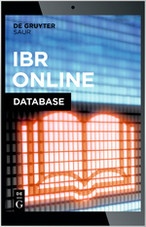- 12 December 2020
Article/Publication Details
Views: 2153
ROMAN INGARDEN’S CONTRIBUTION TO SOLVING THE ONTOLOGICAL AND METHODOLOGICAL PROBLEMS OF PHENOMENOLOGY OF MUSIC
| Title in the language of publication: | ROMAN INGARDEN’S CONTRIBUTION TO SOLVING THE ONTOLOGICAL AND METHODOLOGICAL PROBLEMS OF PHENOMENOLOGY OF MUSIC |
| Author: | ANASTASIA MEDOVA ANNA KIRICHENKO |
| Issue: |
HORIZON. Studies in Phenomenology. Vol. 9, №2 (2020), 662-682 |
| Language: | English |
| Document type: | Research Article |
| DOI : 10.21638/2226-5260-2020-9-2-662-682 | PDF (Downloads: 2311) |
Abstract
Phenomenology of music has been a perspective trend of phenomenological aesthetics for more than a hundred years. The topic of the paper is fixation the main problems and vectors of development of phenomenology of music. The authors execute an analysis of Roman Ingarden’s position in the discussions concerning the methodological and ontological problems of phenomenology of music. The paper aims at revealing succession in Roman Ingarden’s solutions to the phenomenology of music problems. The other aim is reflection on the originality of Ingarden’s ideas in the context of phenomenological interpretations of music in 20th and 21st centuries. The solution to these tasks allows the authors to fix key problems and identify the principal positions of phenomenology of music. The main sources of the comparative and historical analysis are the studies carried out by Husserl, Sartre, Merleau-Ponty, Clifton, and Ihde. The most important ontological problems of phenomenology of music are: spatiotemporal constitution of music, reduction of a work of music to its performance, and ontological status of a work of music. The analysis of Ingarden’s position on these problems allows us to characterize it as something different from the existing versions. According to the conception, the time of music is a special type of time, that is, quasi-time. A piece of music is a purely intentional, heteronomous, and intersubjective object. There are a number of methodological specificities of Ingarden’s approach: a refusal of reduction of musical theoretical data, a tendency for independence of a piece of music from conscious and mental processes, and an interpretation of a piece of music as a non-sounding phenomenon. In conclusion, the authors demonstrate how the originality and radical nature of Ingarden’s conclusions made his position defenseless against critique and simultaneously marked the tendency in the contemporary phenomenological studies of music.
Key words
Roman Ingarden, ontology of music, acoustic phenomenon, musical time, space of music, bound idealities, intentional object, quasitemporal structure, semantic intention.
References
- Adorno, T.W.(2006). Current of Music: Elements of a Radio Theory (R.Hullot-Kentor, Ed.). Frankfurt am Main: Suhrkamp.
- Brown, N.(2006). The Flux Between Sounding and Sound: Towards a Relational Understanding of Music as Embodied Action. Contemporary Music Review, 25 (1), 37–46.
- Christensen, E.(2012). Music Listening, Music Therapy, Phenomenology and Neuroscience. Aalborg University, Denmark. Retrieved from http://www.mt-phd.aau.dk/phd-theses
- Clifton, T.(1976). Music as Constituted Object. Music and Man, 2, 73–98.
- Clifton, T.(1983). Music as Heard: A Study in Applied Phenomenology. New Haven: Yale University Press.
- Conrad, W.(1908). Der ästhetische Gegenstand. Zeitschrift für Ästhetik und allgemeine Kunstwissenschaft, 3, 71–118.
- Dufrenne, M.(1953). Phenomenologie de l’experience esthétique. Paris: Press universitaires de France.
- Ferrara, L.(1984). Phenomenology as a Tool for Musical Analysis. Musical Quarterly, 70 (3), 355–373.
- Geniusas, S.(2018). Musical Works as Ideal Objects: Phenomenology of Music and its Implications for Philosophical Anthropology. Dialogue and Universalism, 28 (4), 231–244.
- Husserl, E.(1901). Logische Untersuchungen. Zweiter Teil: Untersuchungen zur Phänomenologie und Theorie der Erkenntnis. Halle: Max Niemeyer.
- Husserl, E.(1973). Experience and Judgment. Investigations in a Genealogy of Logic. Evanston: Northwestern University Press.
- Husserl, E.(1980). Phantasie, Bildbewußtsein, Erinnerung. Zur Phänomenologie der anschaulichen Vergegenwärtigungen. Texte aus dem Nachlass (1898–1925) (E.Marbach, Ed.). The Hague: Martinus Nijhoff Publishers.
- Ihde, D.(2003). Postphenomenology — Again? Working Paper No. 3, Centre for STS Studies, Aarhus University Denmark, 3–25.
- Ihde, D.(2007). Listening and Voice. Phenomenologies of Sound (2nd ed.). Albany, NY: State University of New York Press.
- Ingarden, R.(1955). Elementy dzieła muzycznego. Sprawozdania Towarzystwa Naukowego w Toruniu, 9 (1-4), 82–84.
- Ingarden, R.(1958). Studia z estetyki. Vol.II.Warszawa: Państwowe Wydawnictwo Naukowe.
- Ingarden, R.(1962). Untersuchungen zur Ontologie der Kunst: Musikwerk. Bild. Architektur. Film. Tübingen: Max Niemeyer.
- Ingarden, R.(1973). Utwór muzyczny i sprawa jego tożsamości. Warszawa: Polskie Wydawnictwo Muzyczne.
- Ingarden, R.(1975). On the Motives Which Led Husserl to Transcendental Idealism. The Hague: Martinus Nijhoff.
- Ingarden, R.(1986). The Work of Music and the Problem of its Identity (A.Czerniawski, Trans.; J.G.Harrell, Ed.). Oakland: University of California Press.
- Ingarden, R.(1987). Spór o istnienie Świata. Vol.I: Ontologia egzystencjalna. Warszawa: Państwowe Wydawnictwo Naukowe.
- Kocay, V.(2002). Roman Ingarden’s Unique Conception of Aesthetic Objects. In A.-T.Tymieniecka (Ed.), Phenomenology World-Wide. Analecta Husserliana, Vol. 80 (202–210). Dordrecht: Springer.
- Lea, J.(2009). Post-Phenomenology. Post-phenomenological Geographies. In R.Kitchen, & N.Thrift (Eds.), International Encyclopaedia of Human Geography (373–378). London: Elsevier.
- Lochhead, J.(1986). Temporal Structure in Recent Music. Journal of Musicological Research, 6, 49–93.
- Merleau-Ponty, M.(1962). Phenomenology of Perception (C. Smith, Trans.). London: Routledge & Kegan Paul.
- Merleau-Ponty, M.(2002). Phenomenology of Perception (2nd ed.). London: Routledge Classics.
- Mitscherling, J.(2012). Roman Ingarden’s Aesthetics Philosophy. Compass, 7 (7), 436–447.
- Moran, D., & Cohen, J.(2012). The Husserl Dictionary. Continuum Philosophical Dictionaries. London: Continuum.
- Pryer, A.(2013). The Ontology of Music and the Challenge of Performance: Identity versus Variety, and the Persistence of the “Text”. In T.Makel, & T.Klein (Eds.), The Embodiment of Authority: Perspectives on Performance (100–214). Frankfurt: Peter Lang.
- Pytlak, A.(1989) On Ingarden’s Conception of the Musical Composition. In B.Dziemidok, & P.McCormick (Eds.), On the Aesthetics of Roman Ingarden: Interpretations and Assessments (233–254). Dordrecht: Kluwer Academic Publishers.
- Rose, M., & Wylie, J.(2006). Animating Landscape. Environment and Planning D. Society and Space, 24, 475–479.
- Sartre, J.-P.(1940). L’imaginaire: Psychologie phénoménologique de l’imagination. Paris: Gallimard.
- Sartre, J.-P.(2004). The Imaginary: A Phenomenological Psychology of the Imagination (J.Webber, Trans.). London & New York: Routledge.
- Schütz, A.(1976). Fragments on the Phenomenology of Music. Music and Man, 2, 5–71.
- Siu, R.C.(2016). Rethinking the Body and Space in Alfred Schutz’s Phenomenology of Music. Human Studies, 39, 533–546.
- Smith, F.J.(1973). Musical Sound as a Model for Husserlian Intuition and Time-Consciousness. Journal of Phenomenological Psychology, 4, 271–296.
- Sodeika, T.(1989). The Ingarden-Husserl Controversy: The Methodological Status of Consciousness in Phenomenology and the Limits of the Human Condition. In A.-T.Tymieniecka (Ed.), Man Within His Life World: Contributions To Phenomenology By Scholars From East Central Europe (209–221). Dordrecht: Springer Science & Business Media.
- Welten, R.(2009). What Do We Hear When We Hear Music? A Radical Phenomenology of Music. Studia Phaenomenologica, 9, 269–286.

This work is licensed under a Creative Commons Attribution-NonCommercial 4.0 International License.

|
|
|
|
|

|
|
|
|
|

|
|
|
|
|
|
|
|
|
|
|
|
|
|
|
|
|
|
|
|
|
|

|
|
|
|
|
|
|
|
|
|
|
|
|
|
|
|
|
|
|
|
|
|
|
|
|
|
|
|

|

|
Social networks:





